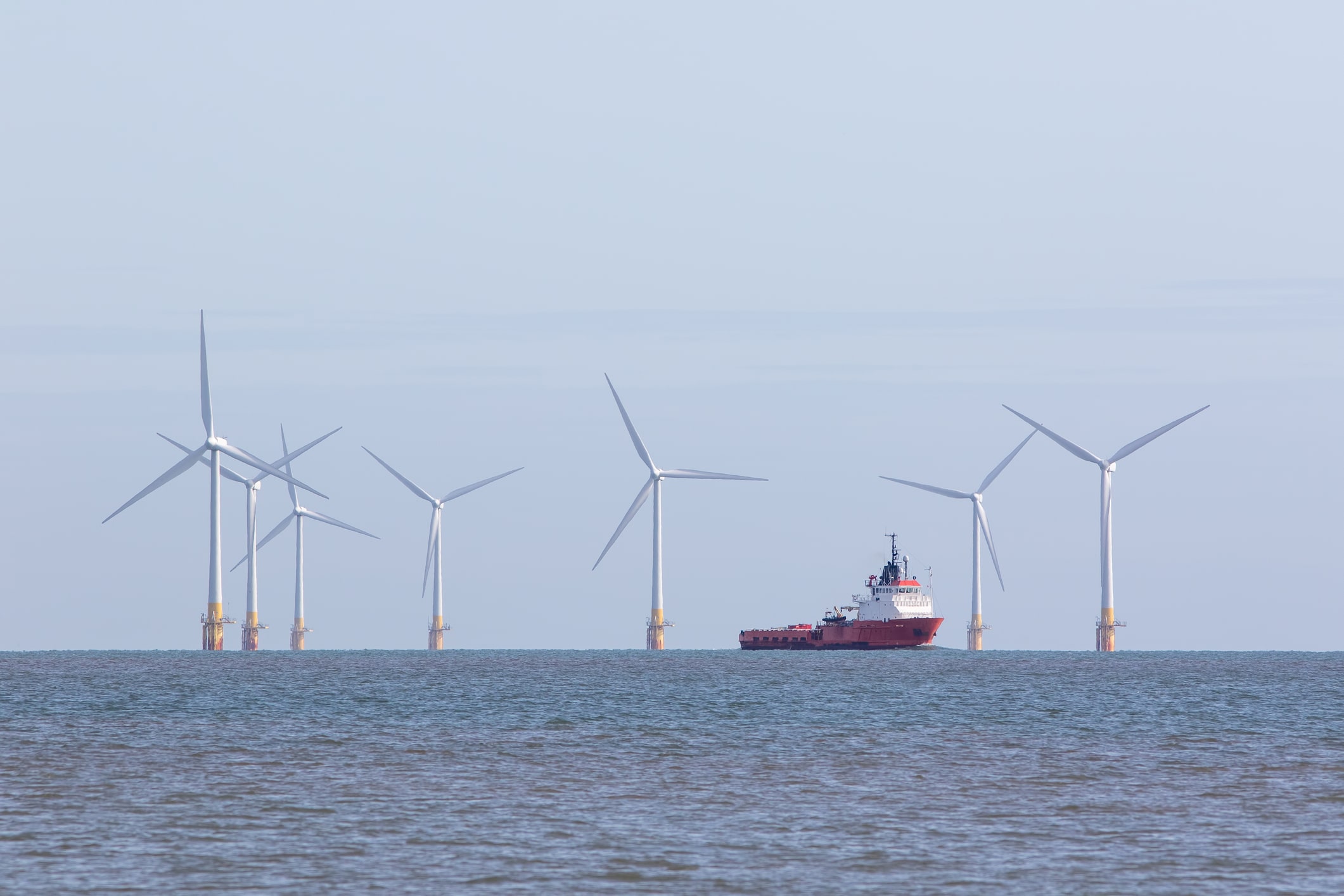The rising demand for renewable energy means a corresponding increase in the workforce required to build, operate, and maintain offshore wind farms. With that comes a unique set of health and safety challenges.
According to the U.S. Department of Energy (DOE) Office of Energy Efficiency and Renewable Energy, wind power in the United States has tripled in the past decade. It is now the largest source of renewable energy in the country.
While the U.S. has been harnessing onshore wind energy for the past decade, with the price of offshore wind per MW ($ per MW) among the lowest energy cost per unit, the U.S. is ramping up to capitalize on the offshore wind energy market.
As of March 2020, offshore wind capacity in the U.S. was 6,430 MW – more than triple the capacity reported in 2019.
The United Kingdom (U.K.) leads the world in offshore wind capacity and has revised its offshore wind deployment target of 40 GW by 2030, up from the 10 GW it currently has.
As the sector grows in the U.S., renewable energy companies can learn from the U.K. to ensure they have the medical staffing, team, and resources necessary to protect workers on offshore wind farms.
Read on to learn what RMI and SSI’s combined experience in the U.K. has taught us about:
- How offshore wind farms pose unique challenges to employee health and safety that necessitate specialized medical support services.
- When the medical support needed to protect workers will change over time as offshore locations grow.
- What the impact of COVID-19 has been on this growing sector, and what it means for the future.
- Why it’s essential to partner with a company that understands the renewable energy market.
Safety Challenges of Offshore Wind FarmsÂ
Offshore wind farms are by their very nature remote locations. In the event of an emergency such as a heart attack or an on-the-job injury, medical care must be administered on-site prior to evacuation.
The immense size of a wind turbine is also a challenge to worker safety. Today’s wind turbines can be upwards of 200 feet. Rescue skills are critical to reaching a worker who requires medical attention in a turbine.
An offshore wind farm medical team is not just treating employees who visit the ship’s hospital; they must also be prepared to deliver care in a 200 foot+ turbine or lower the patient to safety.
Further, as the demand for offshore wind energy in the U.S. rapidly increases, construction will be a 24/7 operation, which only increases the need for trained medical support staff.
Wind Farm Construction vs. O&M Medical Needs
Our team’s experience with offshore wind farms in the U.K. has helped RMI develop agile strategies for this sector that address the specific employee health and safety needs as operations grow.
During the initial construction phase, trained medical professionals must be deployed on service operation and jack-up vessels. This deployment is typically a short-term assignment.
However, once the wind farm moves into the operations and maintenance (O&M) phase, a medical support team that works alongside technicians for the long-term is required. Offshore wind farm employees expect professional-level care to maintain day-to-day health as well as in the case of an emergency.
Identifying the right medical support services and resources for an offshore wind farm requires a solid understanding of their business operations with the flexibility to change the medical services provided as the wind farm’s needs shift with time.
COVID-19 PandemicÂ
The COVID-19 outbreak caught many industries off guard. Knowing how important it was to keep businesses up and running, Remote Medical quickly introduced COVID-19 services.
To ensure the continuous operation of your offshore wind farm, it’s critical your medical services partner has the flexibility to offer new services when an emergency, such as a global pandemic, occurs.
While you may not know when or where the next global pandemic may hit, look for a medical services partner with a track record of adapting services to meet evolving medical needs.
Critical Medical Support Services for Renewable Energy Companies
As the burgeoning offshore wind energy industry grows in the U.S., our experience working in the U.K. has shown that companies must offer medical support services that include paramedics, rescue capabilities, and topside services.
Because the work environment is well-outside the acceptable distance to the nearest hospital, offshore wind farms must have the services and resources to provide extended care to employees in the event of a construction injury or other medical situation.
Seek a partner experienced in the renewable energy sector that understands the unique safety challenges of offshore wind farms and has the agility to meet an evolving set of medical needs to keep your employees safe, healthy, and on the job.


